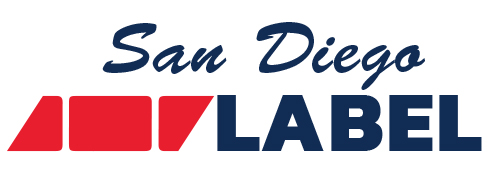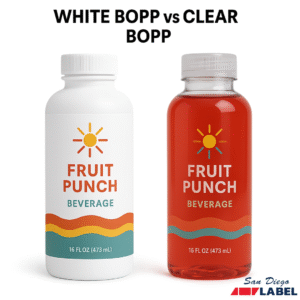When you walk down a grocery aisle or browse a cosmetics shelf, chances are you’re looking at BOPP labels (biaxially oriented polypropylene). This durable, moisture-resistant film has become one of the most widely used substrates in the labeling industry. But here’s the question: should you choose white BOPP or clear BOPP for your packaging?
Both materials are strong performers, yet they create very different looks. Let’s break down how each works, when to use them, and what to keep in mind for your next project.
What Is White BOPP?
White BOPP is an opaque film that provides a solid background for printing. Because it’s non-transparent, it offers high color contrast and crisp readability.
This makes it ideal for designs where graphics, text, or barcodes need to stand out. For example, brands in the food sector often choose white BOPP to ensure bold product names and clear nutritional panels.
-
Strengths: vivid color reproduction, strong moisture resistance, affordable film option.
-
Limitations: lacks the sleek, modern appearance of a transparent label.
What Is Clear BOPP?
Clear BOPP offers what’s known as the “no-label look.” This transparent film lets the product or container shine through the packaging, giving a seamless, high-end appearance.
It’s especially popular in cosmetics (think lotions, serums, and personal care items) and beverages (bottled water, specialty drinks) where a minimal, premium look is part of the branding.
-
Strengths: sleek, premium feel, blends into the container surface.
-
Limitations: may require a white underprint behind certain design elements so colors don’t appear muted.
When to Choose Each
The right choice depends on your product and brand goals:
-
Food & Beverage: White BOPP ensures bright graphics and scannable barcodes; clear BOPP works well for beverages with transparent containers.
-
Cosmetics & Personal Care: Clear BOPP achieves the “floating design” effect that many premium brands want.
-
Industrial & Logistics: White BOPP offers readability and contrast, which is critical for compliance, barcodes, and variable data printing.
If you’re new to substrate selection, our Complete Guide to Label Substrates provides an overview of paper, films, and specialty materials — including where BOPP fits into the bigger picture.
What the Experts Say
Material manufacturers and packaging experts agree: BOPP is here to stay. According to Avery Dennison, BOPP films balance durability with cost efficiency, making them the standard choice across industries.
Industry analysts also point out that demand for premium effects continues to grow. In fact, Packaging Digest notes that “transparent labels that blend seamlessly with the package surface are increasingly driving consumer perception of quality.”
Final Thoughts
Both clear BOPP and white BOPP labels are strong, versatile options. If you need bold, high-contrast graphics, white BOPP is the way to go. If your goal is a sleek, no-label appearance, clear BOPP delivers.
👉 Still not sure which one fits your packaging? Our team at San Diego Label can provide samples and help you choose the right substrate for your brand.

